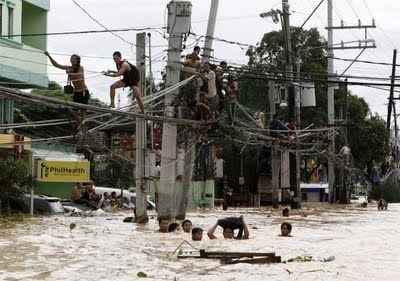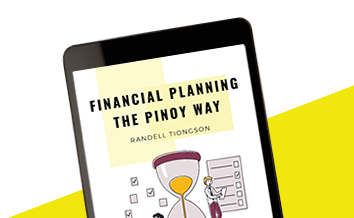Philippine Economy Update, 11.26.2009
By Randell Tiongson on November 27th, 2009
Philippine economy is expected to see some minimal growth — still good news considering many economies are still in recession. However, inflation is becoming to be a concern, let’s pray it is a temporary situation. Inflation per se is not bad, so long as we see economic growth.

Philippine Central Bank sees inflation accelarating in November
- The Philippine central bank expects inflation to accelerate further in November
- Inflation for November is forecast to range between 2.4% to 3.3%
- This is due to the impact of recent typhoons in the main island of Luzon.
- Inflation already accelerated 1.6% on year in October.
- The average inflation rate in the first 10 months is at 3.2%.
- The central bank sees inflation to hover 2.5% and 4.5% for this year.
- 2010 inflation is seen between 3.5% and 5.5%.
Disappointing 3Q09 growth
· Philippine economic growth in the 3Q09 fell below expectations.
· COMMENT: 3Q09 GDP grew 0.8% Yoy, dragged by the decline in manufacturing (-4.4%) and a sluggish farm sector (+1.6%).
· Services, which account for over half of GDP, rose 4.0% on year,
· On the demand side, figures were slowed down by the negative growth in Capital Formation (-11%) and Exports (-14%).
· 2Q09 growth was also at +0.8%.
· Average forecast on the street was a +1.9% expansion, making the actual figure pale and worrisome.
· On a seasonally adjusted comparison, GDP rose 1.0% over the 2Q09 output.
· Poor results might impact in the long run especially after the IMF just revised expectations this year from +1% to +1.5%.
· Currently, Philippine growth would be happy enough to reached the lower end of the target growth range of +0.8% to +1.8%
· Consumer spending typically rises in the 4Q and remittances are at its highest levels in November-December. Reconstruction activities due to the typhoon could also prop up economic activity in the last quarter.
· Personal Consumer Expenditure growth remains critical next year as election spending triggers recovery.
· PCE merely grew +0.2% on a seasonally adjusted format, its lowest since revised data in 1995.
Should you start buying US Dollars?
By Randell Tiongson on October 15th, 2009
Not too long ago, everyone wanted to keep their money in US Dollars. With the consistent depreciation of the Philippine Peso, people thought that keeping their money in the vaunted USD was the only way for them to ensure that their money will not lose value.
Today, people who kept their money in USD are scratching their heads and hoping that the value of the USD against the Peso will go on an upward trend so that they can recover their losses. Will that happen? Maybe. Will it happen soon? Not likely.
 A recent report in the Philippine Star even forecasted the exchange rate to further go down P 46.50 : $1. Why? It still goes back to the laws of supply and demand. The price of the once mighty green bucks has been dampened by too much supply. Just in the month of July, remittances rose by 9.3 percent from $1.4 billion in 2008 to $1.5 billion, posting the highest year-on-year growth in 2009. July influx brought remittances in the first seven months to $10 billion, up 3.8 percent from the previous year. The catastrophes of Ondoy and Pepeng are actually increasing the flow of foreign exchange pumping the supply of the USD which results to a weakened USD and a stronger Peso. The CB was so concerned with the Peso becoming too strong that it started to intervene by buying a larger share of the USD in the market.
A recent report in the Philippine Star even forecasted the exchange rate to further go down P 46.50 : $1. Why? It still goes back to the laws of supply and demand. The price of the once mighty green bucks has been dampened by too much supply. Just in the month of July, remittances rose by 9.3 percent from $1.4 billion in 2008 to $1.5 billion, posting the highest year-on-year growth in 2009. July influx brought remittances in the first seven months to $10 billion, up 3.8 percent from the previous year. The catastrophes of Ondoy and Pepeng are actually increasing the flow of foreign exchange pumping the supply of the USD which results to a weakened USD and a stronger Peso. The CB was so concerned with the Peso becoming too strong that it started to intervene by buying a larger share of the USD in the market.
The coming holidays is expected to put an even harder pressure on the USD as supply will see a seasonal spike. You will notice that the Peso is stronger towards the end of the year with the onslaught of remittances.
However, I will strongly urge the readers to hold off any speculative purchases of the USD. The Philippine Peso might still be challenged by budget deficit concerns and weak trade figures. Further, it can be expected that the country’s inflation numbers will rise because it is expected that food prices will become more expensive due to the agricultural havoc brought about by the storms and the floods.
If you need to buy USD, just buy what you need and don’t speculate … always remember the relationship of risk and return. The higher the potential return is, the higher the risk… always is, always will be.

Typhoon damage to farms, economy; FDI rise in July
By Randell Tiongson on October 14th, 2009
Typhoon damage to farms at P12B; to cut GDP growth by 0.2%
· Government estimates the damage that tropical storm Ondoy (international codename: Ketsana) and typhoon Pepeng (international codename: Parma) at P12 billion.
· Ondoy’s damage reached P6.8 billion while Pepeng’s was estimated at P5 billion.
· Around 365,884 hectares of farm lands were affected, damaging 559,629 metric tons of palay worth P9.6 billion.
From an initial 60,000 has, damaged plantation is now at 106,189 hectares.
· Agriculture department will not meet the 3.5% farm output growth target for 2009.
· Agriculture output downgraded to 2%-2.5% this year, lower than the 4.68% growth in 2008.
· Finance officials estimate that typhoon damage would trim 0.2% points to Philippine GDP growth.
Foreign investments rise to $347M in July
· Philippine central bank said a net inflow of foreign direct investments (FDI) worth $347 million was recorded in July.
· This is a reversal from net outflow of $133 million recorded in June.
· On a yearly basis, net inflows for the July 2009 were 8.1% more than year ago’s $321 million.
· Year-to-date net inflow of $1.2 billion is 33.8% higher than the same level in comparable period last year.
Update as of 10.13.2009


 A recent report in the Philippine Star even forecasted the exchange rate to further go down P 46.50 : $1. Why? It still goes back to the laws of supply and demand. The price of the once mighty green bucks has been dampened by too much supply. Just in the month of July, remittances rose by 9.3 percent from $1.4 billion in 2008 to $1.5 billion, posting the highest year-on-year growth in 2009. July influx brought remittances in the first seven months to $10 billion, up 3.8 percent from the previous year. The catastrophes of Ondoy and Pepeng are actually increasing the flow of foreign exchange pumping the supply of the USD which results to a weakened USD and a stronger Peso. The CB was so concerned with the Peso becoming too strong that it started to intervene by buying a larger share of the USD in the market.
A recent report in the Philippine Star even forecasted the exchange rate to further go down P 46.50 : $1. Why? It still goes back to the laws of supply and demand. The price of the once mighty green bucks has been dampened by too much supply. Just in the month of July, remittances rose by 9.3 percent from $1.4 billion in 2008 to $1.5 billion, posting the highest year-on-year growth in 2009. July influx brought remittances in the first seven months to $10 billion, up 3.8 percent from the previous year. The catastrophes of Ondoy and Pepeng are actually increasing the flow of foreign exchange pumping the supply of the USD which results to a weakened USD and a stronger Peso. The CB was so concerned with the Peso becoming too strong that it started to intervene by buying a larger share of the USD in the market.

